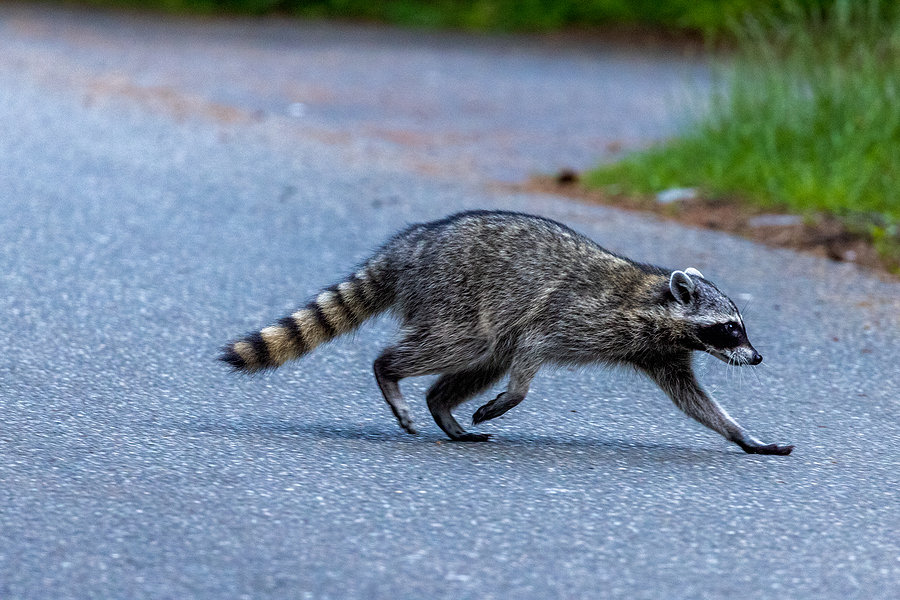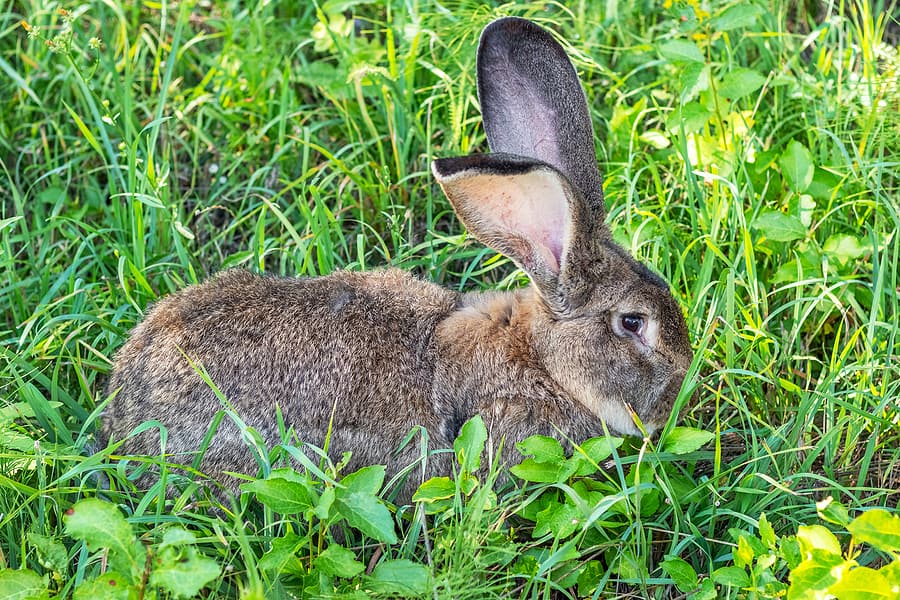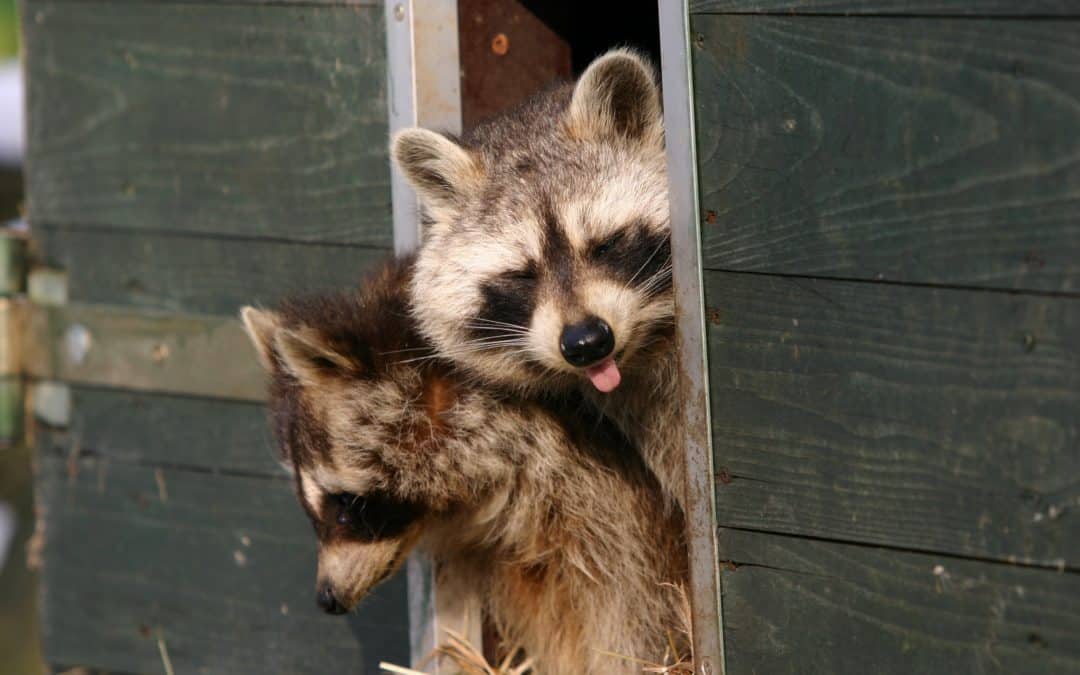READY TO GET STARTED?
REQUEST A FREE ESTIMATE
Fill out the form below or call (888) 466-7849 for a free, no-obligation estimate.

Raccoons are one of the most easily recognizable pests that homeowners deal with. These common wildlife are known for their distinctive black masks over their eyes and ringed tails. Raccoons have gray and black fur and are about the size of an average housecat or small dog. They have 5 fingers on each hand and are extremely coordinated. They are highly intelligent with excellent memories. Raccoons are found in every state of the US.
Raccoons are scavengers and mostly hunt for food at night. They will eat almost anything. They are also highly adaptable allowing them to live in a wide variety of habitats (urban, suburban, rural, forest, mountain, coastal, and more).
When raccoons nest in or near your house they can cause significant damage to both your property and your health. Their damage isn’t just limited to tipped over trashcans. In their search for a nesting site they will rip off shingles, fascia boards, and even chimney vents. Once inside your home, they can destroy insulation, chew through electrical wires, and contaminate your home with urine and feces. They will dig up your yard in search of grubs and even tear off decking to get under porches and decks.
Signs of raccoons on or near your property include:
Getting rid of raccoons can be difficult. They are crafty and can be difficult to trap. Here are some ways to prevent raccoons from taking over your home or yard.
Nearby food sources will attract females to the area to nest and also allow populations to grow rapidly. Eliminating food sources makes your property less attractive to raccoons and other wildlife. Make sure to use heavy trashcans with secure lids. You may consider putting your cans in a rack or tying them to a secure post to prevent tipping. If your lids aren’t secure, use bungee cord or wire to make sure lids are secure. Bring in pet food before nightfall. Try to deter raccoons from bird feeders by using raccoon-proof feeders, hanging from shepherd’s hooks, or bringing them in overnight. Pick up any fallen fruit or nuts from the ground. Consider installing fencing around gardens, ponds, or compost piles. Electric fence is preferable as raccoons can climb over or dig under regular fencing. Don’t intentionally feed raccoons as this will only attract more and increase the population.
Without a place to nest, raccoons will likely move on to a more hospitable environment. Clean up your yard and keep your grass mowed. Remove wood piles and thin out any overgrown shrubbery. Trim branches away from your roof, providing at least a 5′ gap between the roof and any trees. Get rid of any trellises or arbors that may allow access to your roof.
Raccoons like to nest in chimneys so make sure it is sealed when not in use with a chimney cap that is tightly secured. Make sure there are no animals inside your chimney before sealing it off. Inspect the exterior of your home and identify any other possible entry points, as well. Close off spaces under porches, decks, and sheds with wire mesh. Make sure the bottom edge of the wire is buried at least 6 inches deep and extends out at least 12 inches. Make sure to back-cover the wire with soil.
There are several repellents and products designed to scare raccoons with motion and light. Raccoons are highly intelligent and these products will only be effective until they realize there is no threat. Trapping can also be dangerous for homeowners as these nuisance wildlife carry a wide range of parasites and diseases that can be harmful to both humans and pets. Raccoons will bite or scratch if they feel threatened or if they have their young near them. They are known to carry rabies, roundworm, and canine distemper.
If you have an issue with raccoons or any other wildlife, consider contacting a professional pest control company who specializes in wildlife control and wildlife exclusion. They can identify where raccoons may be feeding or nesting and safely and legally trap and relocate them.
Identifying and Controlling Armyworms
How to Bring Your Lawn Back to Life This Spring

While some may have an idyllic picture of wildlife on their property (deer roaming across their yards, cute bunnies hopping through the garden), these nuisance wildlife can decimate your lawn or garden overnight. Squirrels digging holes, deer eating shrubs, and rabbits chowing down on your vegetables can leave you with a mess to deal with. If you don’t want to have to share your outdoor living space with these pests, consider these simple wildlife exclusion tips to prevent wildlife from taking over your yard.
The first step in wildlife control is identifying which critter you have.
Wildlife are less likely to hang out in your yard if they don’t have a place to hide. Getting rid of wood piles, brush, and overgrown shrubbery will eliminate the majority of their hiding spots. Open spaces and neatly trimmed flower beds help to discourage them, especially rabbits and groundhogs.
Another thing wildlife look for in your yard is a food source. Getting rid of their food or discouraging them from it will go a long way in keeping them out. Fill your garden with plants that deer and rabbits dislike. Pick any edible fruits and vegetables as soon as they are ripe. Collect fallen fruit and nuts before the squirrels can get to them. Don’t leave pet food sitting out overnight. Strap or bungee trash can lids onto your cans.
There are several plants you can include in your landscaping that help deter wildlife. Most animals will be repelled by the smell of garlic plants. Daffodils are a pretty addition to your garden but most animals dislike the bitter taste of their leaves. Lavender is great for repelling deer and rabbits. Marigolds work well at repelling moles. You can also use distasteful substances to spray or sprinkle around your garden or individual plants to help repel wildlife. Some substances that are effective include hot pepper extract, predator urine, castor oil, garlic clippings, cayenne pepper, putrid egg whites, and coffee grounds.
Putting deterrents in your yard can help scare these pests away. Dogs who have free run in your yard are great at keeping these wildlife away. You can also use noisemakers, motion-activated sprinklers and lights, automated sprinklers, garden spinners, decoy animals, and pinwheels to help scare them away.
You can also keep wildlife at bay by making it physically impossible (or at least much more difficult) for them to get into your yard or garden. You can put up a barrier to protect your yard or even individual plants you want to protect. Netting or chicken wire around plants or a wire cloche over plants can protect them from rabbits, groundhogs, squirrels, and deer. Putting electric fencing around your vegetable gardens can exclude most wildlife as long as they can’t go over or under it. To keep deer out, fences should either be extremely high (8 feet or taller) or short, doubled, and wide (such as 2 shorter fences spaced 5 feet apart). Use sturdy wire or hardware cloth to close any openings under your shed and deck to help keep out rabbits and groundhogs, Make sure to bend the wire into an L-shape and bury it several inches under the ground to keep them from digging underneath it.
If you have a problem with wildlife, contact your local wildlife control company who can help you identify which type of pest you are dealing with and provide you with the best wildlife exclusion methods for your situation.
How Common is the American Cockroach?
5 Winter Lawn Care Tips for Southern Homes

Food, water, and a warm place to live are three things wildlife creatures are in search of this winter season. For them, our house can give them direct access to these needs, where they often find their way into our chimneys, attic, basements, and crawlspaces. It’s important to know what pests to look out for and what preventative measures to take, to help prevent a wildlife infestation.
Rats
Seeing a rat inside is always alarming. These rodents are known to live in crawlspaces and between the side beams of walls, often accessing inside through the smallest hole and gap. Once inside, rats will chew on electrical wire, causing property damage and an increased risk of fires. Their droppings are also a risk, as they contain pathogens dangerous to humans.
Raccoons
Nocturnal omnivores, raccoons are dexterous and can use their paws to open lids and doors. These animals will use their hands to dig for food, especially in garbage cans. A creature of habit, once raccoons discover food sources in a particular area, such as your house, they will keep coming back over and over, causing both a risk of an infestation and damaged property.
Squirrels
Squirrels are one of the most common wildlife creatures homeowners see. While they are cute from afar, if found inside your home, they can cause considerable damage. Squirrels will take refuge in basements and attics, often bringing acorns to store for the wintertime. Like rats, these rodents will also chew on electrical wire, creating a risk of a fire. Both squirrels themselves and their droppings can contain diseases and pathogens.
To avoid a winter wildlife invasion, prevention is key. Here are a few wildlife prevention tips to help with wildlife control: